The ARM vs x86 Wars Have Begun: In-Depth Power Analysis of Atom, Krait & Cortex A15
by Anand Lal Shimpi on January 4, 2013 7:32 AM EST- Posted in
- Tablets
- Intel
- Samsung
- Arm
- Cortex A15
- Smartphones
- Mobile
- SoCs
What's Next? ARM's Cortex A15
Comparing to Qualcomm's APQ8060A gives us a much better idea of how Atom fares in the modern world. Like Intel, Qualcomm appears to prioritize single threaded performance and builds its SoCs on a leading edge LP process. If this were the middle of 2012, the Qualcomm comparison is where we'd stop however this is a new year and there's a new kid in town: ARM's Cortex A15.
We've already looked at Cortex A15 performance and found it to be astounding. While Intel's 5-year old Atom core can still outperform most of the other ARM based designs on the market, the Cortex A15 easily outperforms it. But at what power cost?
To find out, we looked at a Google Nexus 10 featuring a Samsung Exynos 5250 SoC. The 5250 (aka Exynos 5 Dual) features two ARM Cortex A15s running at up to 1.7GHz, coupled with an ARM Mali-T604 GPU. The testing methodology remains identical.
Idle Power
As the Exynos 5250 isn't running Windows RT, we don't need to go through the same song and dance to wait for live tiles to stop animating. The Android home screen is static to begin with, all swings in power consumption have more to do with WiFi at this point:
At idle, the Nexus 10 platform uses more power than any of the other tablets. This shouldn't be too surprising as the display requires much more power, I don't think we can draw any conclusions about the SoC just yet. But just to be sure, let's look at power delivery to the 5250's CPU and GPU blocks themselves:
Ah the wonderful world of power gating. Despite having much more power hungry CPU cores, when they're doing nothing the ARM Cortex A15 looks no different than Atom or even Krait.
Mali-T604 looks excellent here. With virtually nothing happening on the display the GPU doesn't have a lot of work to do to begin with, I believe we're also seeing some of the benefits of Samsung's 32nm LP (HK+MG) process.
Remove WiFi from the equation and things remain fairly similar, total platform power is high thanks to a more power hungry display but at the SoC level idle power consumption is competitive. The GPU power consumption continues to be amazing, although it's possible that Samsung simply doesn't dangle as much off of the GPU power rail as the competitors.


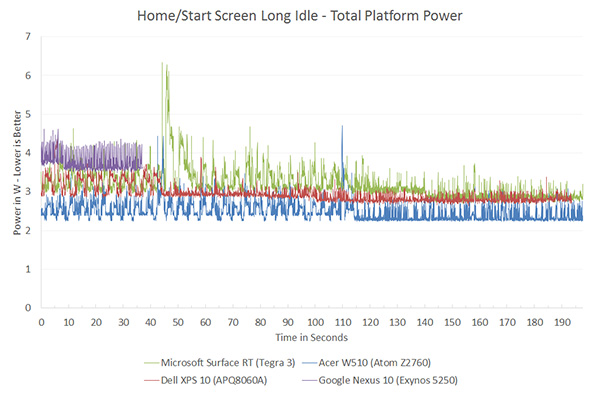
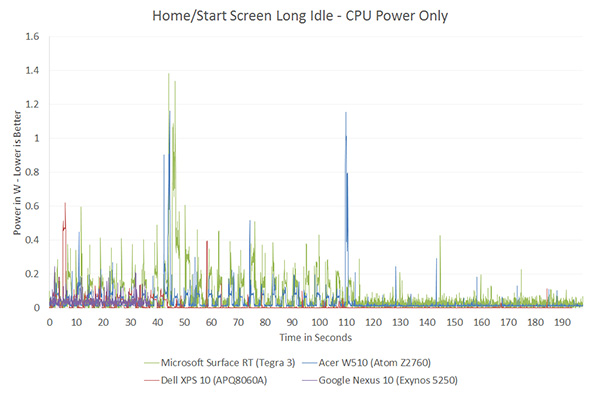
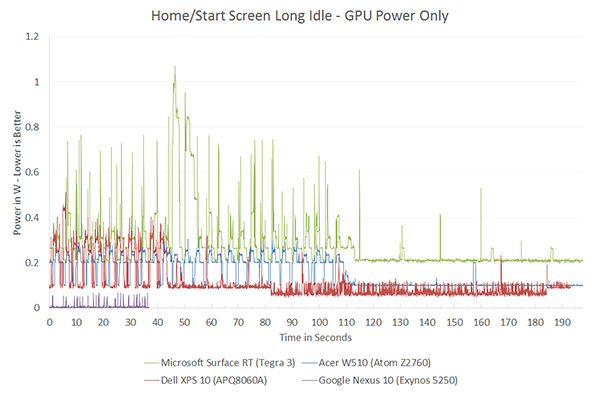
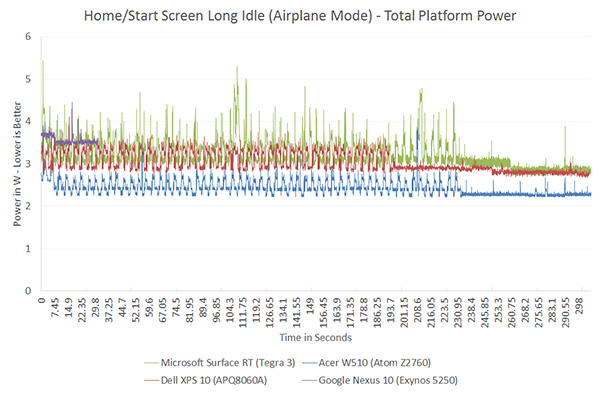
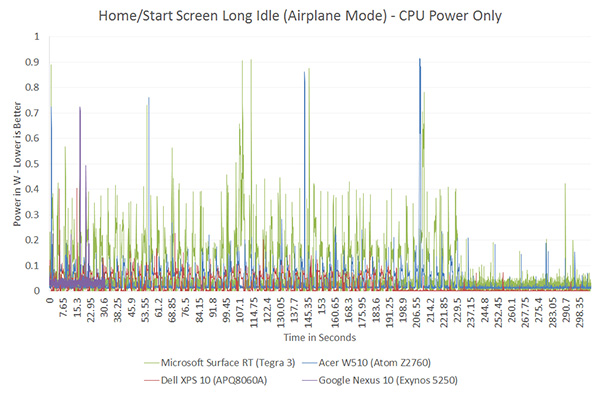
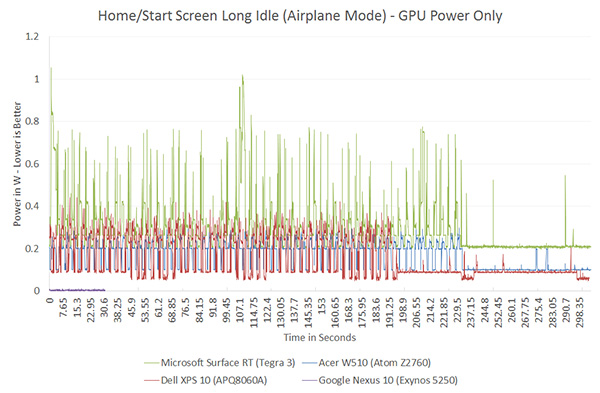








140 Comments
View All Comments
Kidster3001 - Friday, January 4, 2013 - link
Samsung uses everyone's chips in their phones. Samsung, Qualcomm, TI... everyone's. I would not be surprised to see a Samsung phone with Atom in it eventually.jeffkibuule - Friday, January 4, 2013 - link
They've never used other non-Samsung SoCs by choice, especially in their high end phones. They only used Qualcomm MSM8960 in the US GS III because Qualcomm's separate baseband MDM9615 wasn't ready. As soon as it was, we saw the Galaxy Note II use Exynos again. Nvidia and TI chips have been used in the low end from Samsung, but that's not profitable to anyone.Intel needs a major design win from a tier one OEM willing to put its chip inside their flagship phone, and with most phone OEMs actually choosing to start designing their own ARM SoCs (including even LG and Huawei), that task is getting a lot harder than you might think.
felixyang - Saturday, January 5, 2013 - link
some versions of Samsung's GS2 use TI's OMAP.iwod - Saturday, January 5, 2013 - link
Exactly like what is said above. If they have a choice they would rather use everything they produce themselves. Simply Because Wasted Fabs Space is expensive.Icehawk - Friday, January 4, 2013 - link
I find these articles very interesting - however I'd really like to see an aggregate score/total for power usage, IOW what is the area under the curve? As discussed being quicker to complete at higher power can be more efficient - however when looking at a graph it is very hard to see what the total area is. Giving a total wattage used during the test (ie, area under curve) would give a much easier metric to read and it is the important #, not what the voltage maxes or minimums at but the overall usage over time/process IMO.extide - Friday, January 4, 2013 - link
There are indeed several graphs that display total power used in joules, which is the area under the curve of the watts graphs. Maybe you missed them ?jwcalla - Friday, January 4, 2013 - link
That's what the bar charts are showing.GeorgeH - Friday, January 4, 2013 - link
It's already there. A Watt is a Joule/Second, so the area under the power/time graphs is measured in Watts * Seconds = Joules.Veteranv2 - Friday, January 4, 2013 - link
Another Intel PR Article, it is getting really sad on this website.Now since you are still using Win8 which is garbage for ARM. Please us the correct software platform for ARM chips. I'd love to see those power measurements then.
Anandtech did it again. Pick the most favorable software platform for Intel, give the least favorable to ARM.
Way to go! Again....
Intel PR at its best...
Veteranv2 - Friday, January 4, 2013 - link
Oh wait its even better!They used totally different screens with almost 4 times the pixels on the nexus 10 and then says it requires more power to do benchmarks. Hahaha, this review gave me a good laugh. Even worse then the previous ones.
This might explain the lack of product overviews at the start.